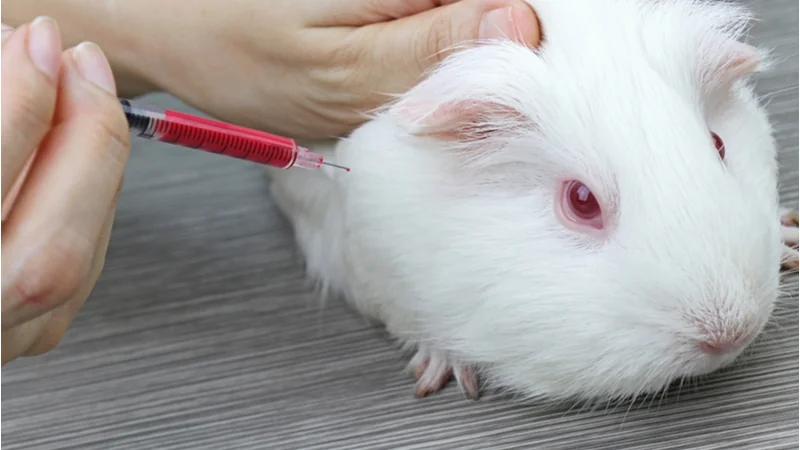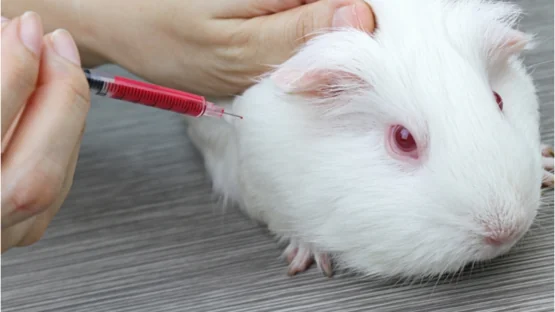Scientists have shown that intravenous delivery of mesenchymal stem cells, which has some advantages over the more conventional intra-articular injection, alleviates age-related osteoarthritis and decreases inflammation in guinea pigs [1].
Systemic administration
Osteoarthritis, a degenerative joint disease, is one of the most common causes of disability in old age. By limiting the ability to maintain healthy levels of physical activity, osteoarthritis also exacerbates the risk of developing other age-related diseases and increases mortality [2]. No approved treatment that prevents or reverses osteoarthritis exists, with pain medication and lifestyle interventions such as diet (to reduce weight and inflammation) and mild exercise being used to control symptoms.
Mesenchymal stem cells, or MSCs (also known as mesenchymal stromal cells, since there is some debate about their “stemness”) have been successfully tested in several studies as a potential treatment for osteoarthritis [3]. However, the established route of delivery, a direct (intra-articular) injection into the joint, has its drawbacks, especially for people with multiple joints affected by the disease. In this new study, researchers from Colorado State University attempted a less conventional method of MSC delivery: intravenous injection.
Guinea pigs as… guinea pigs
Some trials involving intravenous delivery of MSCs have already been conducted and showed systemic anti-inflammatory effects, both in animal models and humans [4]. One study directly compared the intravenous and the intra-articular methods of delivery and found both of them effective, with the latter being somewhat superior [5]. In an osteoarthritis study in dogs, intravenous administration of MSCs improved the animals’ activity and behavior scores [6].
In addition to an unconventional method of delivery, this new study also used an unconventional animal model of osteoarthritis: Hartley guinea pigs. While in mice and rats, osteoarthritis-like conditions are usually induced by intentional injury, Hartley guinea pigs naturally develop a version of osteoarthritis that is histologically very close to the human one.
Animals with moderate osteoarthritis received four weekly intravenous injections of adipose-derived allogeneic MSCs. The treatment did not cause any significant side effects, and labeled MSCs were detected in the lungs, spleens, and livers of the study group, confirming the effectiveness of delivery.
Better gait and less inflammation
The treatment resulted in significantly improved gait outcomes as measured by stride length and maximum speed, which are considered reliable behavioral markers of osteoarthritis.
In line with previous studies, MSCs decreased systemic inflammation as measured by the serum levels of the cytokines monocyte chemoattractant protein-1 (MCP-1) and tumor necrosis factor (TNF) and also of prostaglandin E2 (PGE2). Concentrations of TNF and PGE2 were also significantly lower in the synovial fluid of the treated pigs compared to controls. The researchers also found decreased TNF levels in the kidneys and livers of the treated animals.
According to earlier studies, increased systemic and joint TNF levels are positively correlated with more severe pain in humans with osteoarthritis [7], while targeting the PGE2 pathway can ameliorate osteoarthritis-related inflammation [8].
Histological analysis confirmed widespread osteoarthritis in the aging guinea pigs, both in controls and in the study group. However, the researchers maintain that the lack of noticeable improvement in the study group was anticipated due to the short duration of the study.
Mesenchymal stromal cells have demonstrated potential to promote cartilage repair and provide amelioration of functional signs of OA in preclinical studies. One notable finding of this work was that IV injection of adMSCs in an animal model of spontaneous OA improved clinical signs as demonstrated by gait analysis. This was illustrated via significantly increased stride length and maximal speed in adMSC-treated Hartley guinea pigs. These findings add to the literature regarding IV injection for MSC in OA treatment, which may be desirable in clinical scenarios where multiple joints are affected.
Conclusion
Mesenchymal stem/stromal cells have shown their potential in treating osteoarthritis, but intra-articular injections might not be the only way to go. This new study provides a plausible alternative using an animal model of spontaneous, rather than induced, osteoarthritis. Another interesting finding is that intravenous administration of MSCs decreases systemic inflammation: an advantage that might compensate for the lesser efficacy of the intravenous delivery route.
Literature
[1] Afzali, M. F., Pannone, S. C., Martinez, R. B., Campbell, M. A., Sanford, J. L., Pezzanite, L., Kurihara, J., Johnson, V., Dow, S. W., & Santangelo, K. S. (2022). Intravenous Injection of Adipose-Derived Mesenchymal Stromal Cells Benefits Gait and Inflammation in a Spontaneous Osteoarthritis Model. Journal of orthopaedic research: official publication of the Orthopaedic Research Society, 10.1002/jor.25431
[2] Veronese, N., Cereda, E., Maggi, S., Luchini, C., Solmi, M., Smith, T., … & Stubbs, B. (2016, October). Osteoarthritis and mortality: a prospective cohort study and systematic review with meta-analysis. In Seminars in arthritis and rheumatism (Vol. 46, No. 2, pp. 160-167). WB Saunders.
[3] Zhu, C., Wu, W., & Qu, X. (2021). Mesenchymal stem cells in osteoarthritis therapy: A review. American journal of translational research, 13(2), 448.
[4] Zhang, J., Huang, X., Wang, H., Liu, X., Zhang, T., Wang, Y., & Hu, D. (2015). The challenges and promises of allogeneic mesenchymal stem cells for use as a cell-based therapy. Stem cell research & therapy, 6(1), 1-7.
[5] Mostafa, A., Korayem, H. E., Fekry, E., & Hosny, S. (2021). The effect of intra-articular versus intravenous injection of mesenchymal stem cells on experimentally-Induced knee joint osteoarthritis. Journal of Microscopy and Ultrastructure, 9(1), 31.
[6] Olsen, A., Johnson, V., Webb, T., Santangelo, K. S., Dow, S., & Duerr, F. M. (2019). Evaluation of intravenously delivered allogeneic mesenchymal stem cells for treatment of elbow osteoarthritis in dogs: a pilot study. Veterinary and Comparative Orthopaedics and Traumatology, 32(03), 173-181.
[7] Thudium, C. S., Löfvall, H., Karsdal, M. A., Bay-Jensen, A. C., & Bihlet, A. R. (2019). Protein biomarkers associated with pain mechanisms in osteoarthritis. Journal of proteomics, 190, 55-66.
[8] Manferdini, C., Maumus, M., Gabusi, E., Piacentini, A., Filardo, G., Peyrafitte, J. A., … & Lisignoli, G. (2013). Adipose‐derived mesenchymal stem cells exert antiinflammatory effects on chondrocytes and synoviocytes from osteoarthritis patients through prostaglandin E2. Arthritis & Rheumatism, 65(5), 1271-1281.




